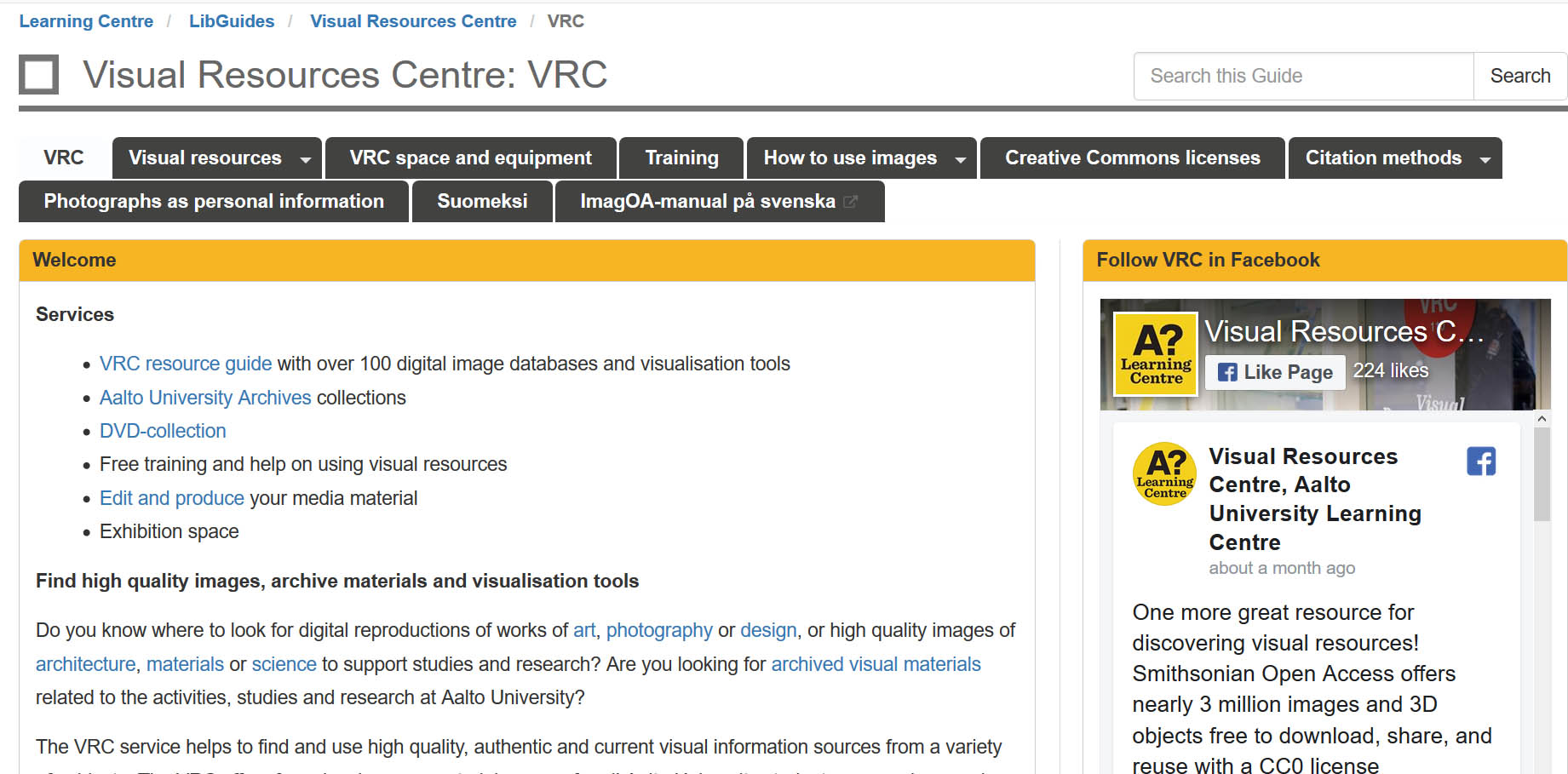Image retrieval
Visual resources course materials
1. Visual resources guide
How to prepare for searching visual materials?
- The search process should be planned so that a wide variety of sources are used, such as large cultural heritage databases, special materials, advanced image search engines and printed materials. Even a visit to an image archive might be necessary.
- Searches are text based although the information need is visual. Keywords and their synonyms, broader and narrower terms can be listed in advance (creators, subjects, places, dates etc.)
- The detail and extent of descriptive information in image databases sometimes varies, and translation of terminology may be necessary in international databases.
Find the visual resources online guide: http://libguides.aalto.fi/vrc

Where to look for images?
- Digital images in libraries, museums and archives databases such as those listed in the visual resources guide
- Pictures from printed publications
- Analogue picture collections in libraries, archives and museums (slides, prints, negatives, film tapes)
- Commercial image banks and photographic agency services
- Image content and image search engines on the open Internet
- Image sharing services and social media
- Artists’ and designers’ own websites and blogs
Why use image databases?
Image databases often contain high-quality image files and tools that facilitate the use of the material.
Internet search engines cannot find the highest quality digitised works in museums, archives and libraries, because the contents of the databases belong to the Internet’s so-called deep network for which no content is included in the search results.
There are probably thousands of versions of the same famous artwork on the Internet, all of which have been treated slightly differently. The official source will have the highest quality and most reliable digital copy of the work.
The image database probably has the most reliable and complete information about the work, with copyright information, as well as other useful contextual information.
Always read carefull the terms and conditions of each database and each image to make sure the the material is usable for the intended purpose.
